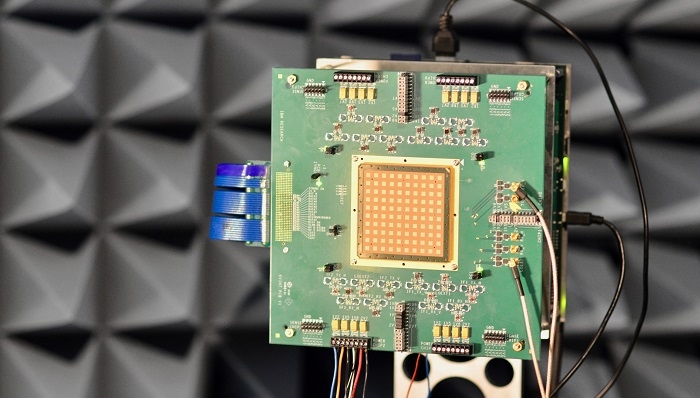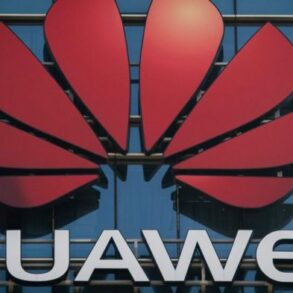Why sub 6 better mmwave immediate 5G future? This question dives into the immediate and future applications of 5G, contrasting the strengths of sub-6 GHz and mmWave technologies. Sub-6 GHz offers wider coverage and more reliable connectivity, perfect for today’s needs like IoT and mobile broadband. Meanwhile, mmWave promises blazing-fast speeds, ideal for future high-bandwidth applications like VR and AR.
Let’s explore the key differences and their implications for the 5G rollout.
A comparative analysis reveals that sub-6 GHz technology currently boasts superior range and reliability, crucial for widespread 5G adoption. Its lower frequency allows for better signal penetration through obstacles, making it ideal for various environments and applications. The lower cost of deployment is also a significant factor, as the infrastructure needed for sub-6 GHz networks is more accessible and less complex than mmWave.
We’ll delve into these advantages and how they influence the immediate future of 5G.
Sub-6 GHz vs. mmWave 5G
The 5G revolution is bringing unprecedented speeds and capabilities to wireless communication. However, different approaches to achieving this high-speed, low-latency future are being pursued, each with its own set of advantages and limitations. A key area of this development is the choice between utilizing lower frequency bands (Sub-6 GHz) and higher frequency bands (mmWave). Understanding the trade-offs between these technologies is critical for deploying and utilizing 5G effectively.The fundamental difference between Sub-6 GHz and mmWave 5G technologies lies in the frequency bands they operate on.
Sub-6 GHz utilizes radio frequencies in the range of 600 MHz to 6 GHz, while mmWave operates in the 24 GHz to 100 GHz range. This difference directly impacts various key aspects of the technology, such as range, speed, and penetration capabilities.
Frequency Characteristics
Sub-6 GHz frequencies are characterized by their relatively lower frequency and longer wavelengths, leading to wider channels and better signal penetration. Conversely, mmWave frequencies, due to their higher frequency and shorter wavelengths, allow for higher data rates. This is analogous to the difference between a wide, shallow river (Sub-6 GHz) and a narrow, swift stream (mmWave) – both can carry water, but one can carry it much faster.
Range and Coverage
Sub-6 GHz signals have a longer range and better ability to penetrate obstacles like buildings and foliage. This characteristic makes them ideal for widespread coverage, particularly in urban areas with dense structures. MmWave signals, on the other hand, have a significantly shorter range and are easily blocked by obstacles. This requires a higher density of base stations for comprehensive coverage.
Imagine a wide-ranging radio signal, like a radio broadcast, and a highly focused laser beam. Both transmit information, but the laser’s reach is significantly limited.
Speed and Data Rates
The higher frequency of mmWave allows for substantially higher theoretical data rates. This potential for extremely high speeds is a key advantage for applications demanding rapid data transfer, such as high-resolution video streaming and high-bandwidth cloud gaming. Sub-6 GHz, while not reaching the same theoretical maximums, provides a more practical, widely available bandwidth for many applications. Consider a highway with multiple lanes (mmWave) versus a single lane road (Sub-6 GHz) – both can move vehicles, but the multiple-lane highway allows for a greater capacity.
Penetration and Signal Reliability
Sub-6 GHz signals are more robust to obstacles like walls and trees. This is a significant advantage for indoor applications and environments with complex structures. MmWave signals are more susceptible to signal attenuation and interference. This requires careful site planning and precise signal management. This translates to needing more base stations for a given area to ensure reliable coverage.
Comparative Overview
| Characteristic | Sub-6 GHz | mmWave |
|---|---|---|
| Frequency | 600 MHz to 6 GHz | 24 GHz to 100 GHz |
| Range | Generally longer, better penetration | Shorter range, easily blocked |
| Speed | Higher data rates than 4G but lower than mmWave | High theoretical maximum data rates |
| Penetration | Better penetration of obstacles | Lower penetration, requires more base stations |
Immediate 5G Applications
Sub-6 GHz 5G technology is rapidly transforming various industries, offering a compelling alternative to mmWave 5G for a wide range of applications. Its lower frequencies translate to broader coverage, increased penetration, and improved reliability, making it ideal for use cases where consistent connectivity and wide reach are paramount. This focus on reliability and coverage unlocks opportunities for innovative applications, particularly in sectors demanding dependable network performance.The widespread adoption of Sub-6 GHz 5G hinges on its suitability for numerous current and emerging applications.
Its ability to deliver reliable connectivity over extended distances makes it an excellent choice for applications where peak speed is not the primary requirement, but consistent and dependable communication is crucial. This allows for efficient implementation in various sectors, from industrial automation to smart city initiatives.
Current and Emerging Applications
Sub-6 GHz 5G is proving its worth in several critical sectors. Its reliable performance and wide coverage make it an excellent fit for applications demanding dependable communication, even in challenging environments. Examples include remote monitoring, industrial automation, and large-scale IoT deployments.
Industrial IoT Applications
The reliability and coverage of Sub-6 GHz 5G make it a powerful tool for industrial IoT (IIoT). This technology allows for the seamless integration of various sensors and devices, facilitating real-time monitoring and control of industrial processes. The ability to transmit data consistently, even in harsh environments, is critical for maintaining operational efficiency and safety. This includes monitoring of machinery, tracking assets, and enabling remote control in factories and other industrial settings.
Predictive maintenance is also enabled, allowing for proactive intervention and reducing downtime.
Sub-6 GHz frequencies are looking better for the immediate 5G future, offering wider coverage and better penetration compared to mmWave. While a great coffee maker knife set trash cans best buy deal of the day might be tempting right now, this awesome deal won’t improve your 5G connection. Ultimately, sub-6’s wider reach makes it the more practical choice for the widespread 5G rollout we need.
Mobile Broadband Applications
While mmWave 5G excels in high-speed data transmission, Sub-6 GHz 5G plays a crucial role in delivering widespread mobile broadband coverage. It ensures reliable connectivity for a wider population, particularly in areas with limited or no mmWave infrastructure. This ensures consistent data access, supporting various mobile services and applications, even in areas with dense population concentrations.
Geographical Variations and Adaptability
Sub-6 GHz 5G infrastructure can be adapted to diverse environments. For instance, in rural areas, where mmWave deployment may be challenging, Sub-6 GHz 5G can provide a reliable connection. In densely populated urban areas, its capacity for delivering wide coverage is crucial. The adaptability of Sub-6 GHz 5G allows for efficient deployment across various terrains and demographics.
Summary of Use Cases
| Geographical Area | Unique Needs | Sub-6 GHz 5G Solution |
|---|---|---|
| Rural areas | Reliable connectivity, broad coverage | Sub-6 GHz 5G infrastructure extends connectivity, enabling efficient remote monitoring and broadband access. |
| Urban areas with high population density | Reliable coverage and high capacity | Sub-6 GHz 5G supports increased bandwidth and data transfer rates, crucial for supporting the demands of urban users. |
| Remote industrial sites | Reliable communication in challenging environments | Sub-6 GHz 5G ensures consistent communication for real-time monitoring, control, and data transmission in challenging environments. |
mmWave 5G

mmWave 5G technology, characterized by its high-frequency spectrum, presents a compelling future for wireless communication. While initial deployments have focused on specific use cases, the potential for transformative applications across various sectors is immense. This exploration delves into the future applications, challenges, and adaptation strategies for mmWave 5G.The high frequencies of mmWave 5G offer the potential for significantly higher data transmission speeds compared to traditional sub-6 GHz 5G.
This capability opens doors for applications requiring substantial bandwidth, a critical aspect for emerging technologies. However, this potential is not without its limitations, and careful consideration of the challenges is crucial for successful implementation.
Potential Future Applications
mmWave 5G’s high bandwidth enables a wide array of applications demanding extremely high data rates. These applications span several sectors and will redefine how we interact with technology.
Sub-6 GHz frequencies are clearly the better path for the immediate 5G future, offering more reliable and consistent coverage compared to mmWave. While cool tech like Android Auto wireless for Pixel, Nexus, JVC, and Kenwood devices might be impressive, the widespread adoption of sub-6 will be key to the success of 5G in everyday use, ensuring broader and more stable mobile connectivity for everyone.
Ultimately, a robust and dependable 5G network is what everyone needs, and sub-6 is poised to deliver that.
- High-Bandwidth Applications: High-resolution video streaming, real-time data transfer for scientific research, and advanced industrial automation processes are examples of applications that critically rely on high bandwidth. The need for instant data access is paramount in these fields, pushing the boundaries of real-time interaction and collaboration.
- Augmented Reality (AR) and Virtual Reality (VR): Immersive experiences in AR and VR applications require significant bandwidth to support high-resolution visuals and interactive features. mmWave 5G can facilitate high-fidelity visuals and low latency, essential for a seamless user experience.
- Autonomous Vehicles: The sophisticated sensor systems and data processing demands of autonomous vehicles require high-bandwidth communication to ensure precise control and real-time data exchange between vehicles and infrastructure. mmWave 5G can support the complex data streams necessary for safe and efficient autonomous operation.
Challenges in Implementation
Despite its potential, mmWave 5G faces several challenges in different environments. These challenges are primarily related to the characteristics of the high-frequency signals and the need for specific infrastructure.
- Limited Range and Penetration: mmWave signals have a shorter range and are more susceptible to obstacles like walls and objects compared to sub-6 GHz signals. This necessitates a dense network infrastructure to maintain coverage and ensure reliable communication.
- Environmental Factors: Atmospheric conditions and weather patterns can significantly affect mmWave signal transmission, potentially impacting reliability and coverage. This poses a significant challenge in outdoor environments and requires advanced signal processing techniques to mitigate these effects.
- High Implementation Costs: The specialized equipment and infrastructure required for mmWave deployment can lead to higher initial investment costs compared to sub-6 GHz networks. Cost-effective solutions and innovative approaches are crucial to address this barrier.
Supporting Future Technological Advancements
mmWave 5G holds the key to driving future technological advancements by enabling faster data transmission and lower latency. This capability directly supports the development of new applications and services.
While mmWave might seem futuristic, sub-6 GHz frequencies are actually better positioned for a more immediate 5G future. Think about it, the wider coverage and lower latency of sub-6 GHz make it easier for everyday uses. Plus, you can check out some crazy deals, like a Domino’s Ferris Bueller Facebook Live pizza discount stream, here , to see how important reliable internet access is, which is something sub-6 GHz is likely to deliver more effectively in the near term.
Ultimately, the practical application and wider reach of sub-6 GHz make it the stronger choice for a robust 5G experience.
- Advancements in Telecommunications: mmWave 5G paves the way for revolutionary improvements in mobile communication, enabling high-bandwidth, low-latency connections for a wider range of applications. This directly contributes to the evolution of the telecommunications sector.
- Medical Imaging and Diagnostics: The capability of mmWave 5G to transmit high-resolution data streams opens new possibilities in real-time medical imaging and diagnostics. This can lead to faster diagnoses and more effective treatments.
Adapting for Specific Use Cases
mmWave 5G’s speed advantage can be leveraged through strategic adaptation for different use cases. The crucial aspect is to tailor the network design to maximize the benefits of the high bandwidth.
- High-Speed Wireless Networking: mmWave 5G can be optimized for high-speed wireless networking applications like large-scale data centers and high-performance computing environments. This requires careful design to ensure consistent high-speed communication and low latency.
- Real-time Data Transfer: Specific adaptations in mmWave 5G networks can be designed for applications demanding real-time data transfer. This requires network infrastructure optimized for low latency and high bandwidth to support real-time data exchange and critical applications.
Infrastructure and Deployment Considerations
The choice between Sub-6 GHz and mmWave 5G technologies hinges significantly on infrastructure requirements and associated costs. These factors play a crucial role in the practical deployment and adoption of each technology, impacting its reach and potential for widespread use. Different deployment strategies and financial implications are evident in the two approaches.The differing characteristics of these two frequency bands directly influence the complexity and cost of establishing a functional network.
Sub-6 GHz, due to its longer wavelengths, necessitates a more extensive network of base stations, potentially requiring a larger initial investment. Conversely, mmWave, with its shorter wavelengths, demands a denser network of base stations, potentially leading to higher operational costs. Both approaches have unique trade-offs that need to be considered in a given market.
Infrastructure Requirements, Why sub 6 better mmwave immediate 5g future
The fundamental difference in infrastructure requirements stems from the distinct propagation characteristics of the two frequency bands. Sub-6 GHz signals travel farther and are less susceptible to obstacles, enabling coverage over larger areas with fewer base stations. This characteristic allows for a less dense network deployment, which is more cost-effective in the initial stages. However, to maintain consistent signal strength, a greater number of base stations might be necessary compared to mmWave.Conversely, mmWave signals are highly directional and readily absorbed by obstacles.
This necessitates a much denser network of base stations strategically placed to ensure adequate coverage and signal strength. This dense deployment is often essential to maintain consistent speeds and connectivity within a given area. While this approach can provide exceptional speeds in localized areas, it often necessitates higher upfront investment and operational costs.
Deployment Costs
Deploying a 5G network involves substantial financial outlays. The cost breakdown varies significantly between Sub-6 GHz and mmWave technologies. Sub-6 GHz, with its less dense infrastructure requirements, generally entails lower initial capital expenditures. The more extensive base station network required for mmWave, however, results in higher initial and ongoing operational costs.
| Feature | Sub-6 GHz | mmWave |
|---|---|---|
| Initial Investment | Lower | Higher |
| Ongoing Operational Costs | Potentially higher due to wider area coverage | Higher due to dense deployment |
| Total Cost of Ownership | Likely lower over time in some scenarios | Likely higher over time in most scenarios |
Technical Challenges in mmWave 5G
Deploying mmWave 5G networks presents significant technical challenges. The highly directional nature of mmWave signals necessitates precise positioning and aiming of antennas. Furthermore, signal attenuation from obstacles like buildings and foliage is a critical concern. Robust signal management and adaptive beamforming techniques are essential to maintain consistent connectivity.
“Precise antenna alignment and strategic placement are critical to mmWave network performance.”
Furthermore, ensuring consistent signal quality across diverse environments requires sophisticated signal processing and management tools. The limited range and susceptibility to obstacles demand a dense deployment of base stations, which presents challenges in densely populated urban areas.
Ease of Deployment
The ease of deployment is another crucial consideration. Sub-6 GHz networks are generally easier to deploy due to their longer range and less stringent infrastructure requirements. The dense deployment needed for mmWave 5G, however, presents a higher degree of complexity and challenges in terms of site acquisition, installation, and integration.
Impact on Geographical Areas
The choice of 5G technology impacts different geographical areas differently. Sub-6 GHz is better suited for areas with diverse terrain and lower population density, providing widespread coverage. MmWave, while offering superior speed in localized areas, is more suitable for densely populated urban centers or specific high-demand zones, such as large stadiums or event venues. The deployment of mmWave 5G is more likely to be seen in areas with a high concentration of users demanding high bandwidth.
Interoperability and Integration
The future of 5G hinges on seamless integration between its various frequency bands, especially the complementary roles of Sub-6 GHz and mmWave technologies. Interoperability isn’t just desirable; it’s crucial for creating a robust and flexible network capable of handling the diverse needs of modern communication. A well-integrated system can effectively leverage the strengths of each band, leading to a more reliable and efficient overall 5G experience.The integration of Sub-6 GHz and mmWave 5G technologies presents a complex but rewarding challenge.
By designing networks that can smoothly transition between these bands, operators can optimize coverage and capacity. This means leveraging the long-range capabilities of Sub-6 GHz for broader area coverage, while using mmWave for high-speed, high-bandwidth applications in localized areas. This synergistic approach will be essential to meet the increasing demands of a connected world.
Integration Potential of Sub-6 GHz and mmWave 5G Networks
Sub-6 GHz and mmWave 5G networks are not mutually exclusive; they are designed to work together. Sub-6 GHz excels in providing wide area coverage and reliable connectivity, while mmWave excels in delivering high-speed data transmission in localized areas. A well-integrated network will dynamically adjust to user location and needs, seamlessly switching between bands for optimal performance.
Utilizing Existing 4G Infrastructure in Sub-6 GHz 5G Networks
Leveraging existing 4G infrastructure in Sub-6 GHz 5G networks offers significant cost savings and accelerated deployment timelines. Operators can use existing towers and infrastructure to quickly expand 5G coverage, minimizing the need for extensive new construction. This approach enables faster rollout of 5G services, making them more accessible to a wider population. This also reduces the overall cost of network expansion, a crucial factor for market adoption.
Coexistence and Complementarity of Technologies
The coexistence and complementarity of Sub-6 GHz and mmWave 5G technologies is a key factor in creating a robust and scalable 5G network. Sub-6 GHz provides wide area coverage, perfect for general mobile data usage, while mmWave offers extremely high speeds and low latency for demanding applications like augmented reality, virtual reality, and high-definition video streaming. These bands can seamlessly transition, ensuring uninterrupted service and maximizing the potential of each technology.
Examples of Combined Use for Optimal Results
Imagine a scenario where a user is streaming high-definition video while simultaneously downloading large files. The Sub-6 GHz band could handle the background data download, while the mmWave band provides the high-speed, low-latency streaming experience needed for the video. This combined approach is crucial for handling the diverse needs of users and the increasing data demands of a modern world.
Another example is in densely populated urban areas, where mmWave can be used to provide high-bandwidth connectivity in hotspots, and Sub-6 GHz can ensure coverage in surrounding areas. This ensures reliable and efficient communication for all users, regardless of their location or specific needs.
Future Trends and Predictions

The 5G landscape is poised for significant evolution, driven by continuous advancements in technology and the ever-increasing demands of a connected world. Sub-6 GHz and mmWave technologies are not mutually exclusive but rather complementary, each excelling in specific use cases. Understanding their future trajectories and interplay is crucial for anticipating the next generation of mobile communication.The future of 5G will be shaped by a dynamic interplay between these two technologies, leveraging the strengths of each to create a more comprehensive and efficient network.
This evolution will not only transform mobile communications but also significantly impact diverse sectors, including healthcare, manufacturing, and education, by enabling new levels of connectivity and data exchange.
Potential Advancements in Antenna Technology
Antenna technology will play a critical role in optimizing the performance and coverage of both Sub-6 GHz and mmWave networks. Miniaturization and improved efficiency of antenna designs will be key to enabling more compact and cost-effective base stations. Advanced antenna arrays and beamforming techniques will improve signal focusing and reduce interference, leading to increased capacity and reduced power consumption.
Furthermore, the integration of novel materials and designs, such as metamaterials and phased arrays, will enhance the performance of mmWave antennas, enabling higher data rates and wider coverage.
Innovations in Signal Processing and Modulation Schemes
Sophisticated signal processing techniques will be crucial for effectively managing the complexities of both Sub-6 GHz and mmWave signals. These techniques will enhance the reliability and efficiency of data transmission, especially in challenging environments with high interference levels. Advancements in modulation schemes, such as higher-order modulation techniques, will increase the spectral efficiency and data rates of 5G networks, enabling faster and more reliable communication.
The Role of 5G in Driving Innovation
G is not merely an upgrade to existing cellular technology; it acts as a catalyst for innovation across diverse industries. The enhanced bandwidth and low latency of 5G will enable real-time data processing and communication, fostering breakthroughs in areas such as remote surgery, precision agriculture, and smart manufacturing. The increased connectivity and data transfer capabilities will fuel the development of new applications and services that were previously unimaginable.
Impact on Healthcare, Manufacturing, and Education
The transformative potential of 5G extends beyond mobile communications, influencing healthcare, manufacturing, and education. In healthcare, remote surgery and telemedicine will become more commonplace, enabling real-time interaction and data exchange between patients and medical professionals across vast distances. In manufacturing, 5G will support the development of smart factories and automated production lines, optimizing efficiency and productivity. In education, 5G will enable interactive learning experiences and virtual classrooms, creating a more immersive and engaging learning environment.
Interplay of Sub-6 GHz and mmWave 5G
The future of 5G relies on the synergistic integration of Sub-6 GHz and mmWave technologies. Sub-6 GHz will provide broad coverage and reliable connectivity for everyday use cases, while mmWave will enable high-speed data transmission for applications requiring extremely high bandwidth, such as virtual reality and augmented reality. This combination will create a hybrid network, providing a seamless and efficient communication experience across various scenarios.
Epilogue: Why Sub 6 Better Mmwave Immediate 5g Future
In conclusion, while mmWave 5G holds the promise of future high-speed applications, sub-6 GHz is currently the better choice for immediate 5G deployments. Its broader coverage, lower cost, and improved reliability make it more suitable for widespread adoption and addressing diverse needs across various geographical areas. Ultimately, the future likely lies in a combined approach, with sub-6 GHz forming the backbone of the 5G network and mmWave providing specialized high-speed solutions for specific applications.
This hybrid approach will maximize the potential of 5G technology for years to come.












